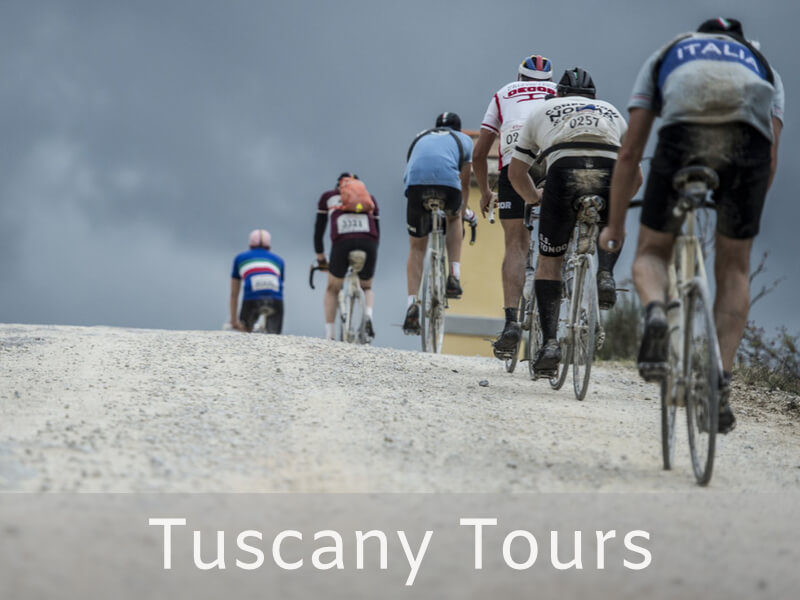Tuscany – Food
In the Tuscan regional cuisine, the dishes of the so-called poor cuisine still dominate the table, the gastronomy that over the centuries has developed from the few ingredients available, a symbol of narrowness but also of the ability to know how to transform simple and leftover raw materials in tasty dishes. Despite its humble origins, Tuscan cuisine boasts a series of extraordinary products, all to be discovered. A robust cuisine with strong flavors where the use of meat (Fiorentina T-Bone), vegetables and legumes (Ribollita) and strong aromas (Pici with Aglione) stands out.
Below is a dinner with the most representative dishes of the regional cuisine of the Tuscany:
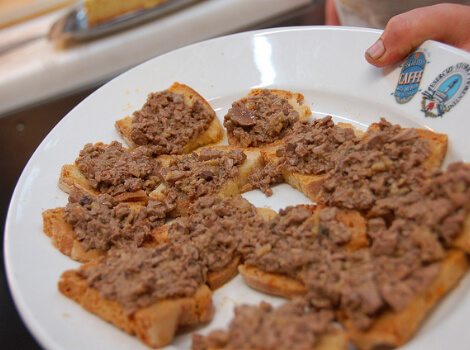
APPETITIZER – TUSCAN LIVER CRUTON
Also known in Tuscany as Crostino Nero, like many peasant dishes, its history has been lost over the times and its recipe has undergone variation and changes passing from generation to generation.
The Tuscan appetizers are made of different types of cold cuts, cheeses and croutons, but the crostini with chicken liver pate is the absolute star.
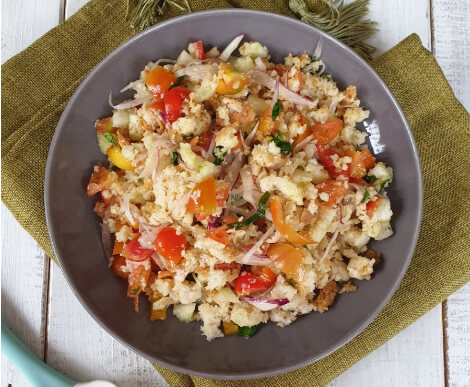
APPETITIZER – PANZANELLA TOSCANA
It is a cold salad made with moistened stale bread and seasonal vegetables. Panzanella means “panzana” the unsalted Tuscan bread and “zanella” the tureen where it is contained.
Panzanella is a peasant dish whose basic ingredients are bread, tomatoes and red onions. Furthermore, depending on the area, cucumber is used in the Florence recipe or celery is present in the Siena recipe.
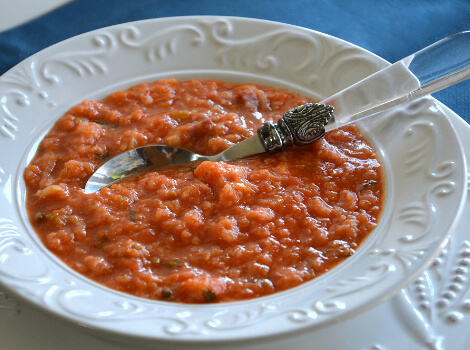
FIRST COURSE/SOUP – PAPPA AL POMODORO
It is the only soup eaten with a fork. It is a summer soup made when tomatoes are sweet when fully ripe, when basil is fragrant, the only bitter and aromatic note is given by the Tuscan added raw olive oil. Tradition says it must be sweet, it is eaten with toasted bread flavored with garlic (bruschetta).
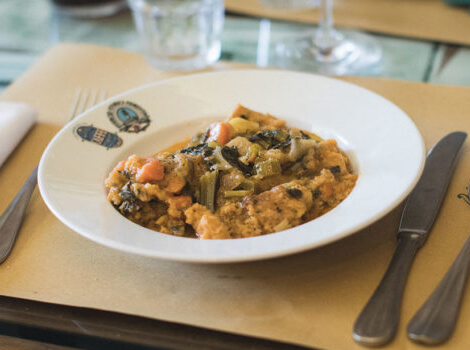
FIRST COURSE/SOUP – RIBOLLITA
Is a traditional Tuscan soup, prepared with stale bread and vegetables. It is a “poor dish” that was born from the diet of farmers in the past. The name means “re-boiled”, the farmers cooked large quantities of it and then “re-boiled” it on the following days.
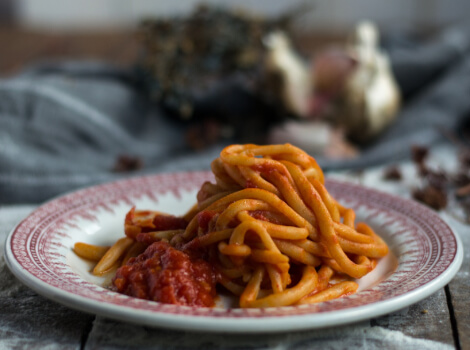
FIRST COURSE/PASTA – PICI ALL’AGLIONE
The most iconic Tuscan pasta dish, long handmade pasta (ancient spaghetti), seasoned with olive oil, large sweet garlic (aglione) and tomato sauce.
Aglione is a variety of garlic grown mainly in the Valdichiana (Tuscany valley), it is a large variety of white garlic that h
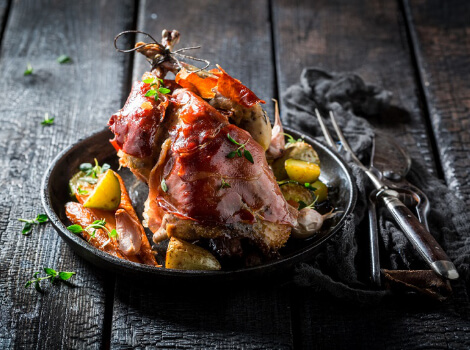
MAIN COURSE – ROASTED PINGEON IN THE PAN
The roast pigeon is one of the Tuscan meat dishes. In Tuscany it is traditional to consume it in mid-August (Italian midsummer festival) during field trips.
Old renaissance recipe, pigeon stuffed with garlic, sausage and pepper roasted in the casserole.
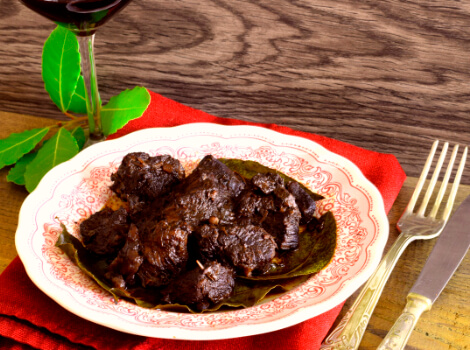
MAIN COURSE – PEPOSO STEW
Traditional dish where the meat is cooked stewed a lot quantity of pepper. Lovers of this spice will find a dish that meets your expectations, tasty, fragrant and rich. The Peposo is cooked for several hours in a terracotta pan, these pans are built in the village of Impruneta near Florence
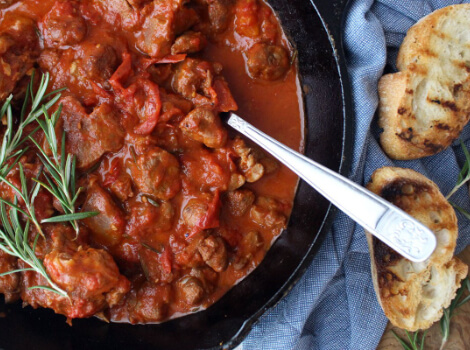
MAIN COURSE – BUGLIONE LAMB
Ancient recipe of popular origin typical of the area of Amiata Mountain, these are pieces of lamb cooked in stew with tomato sauce, garlic, olive oil, sage and rosemary.
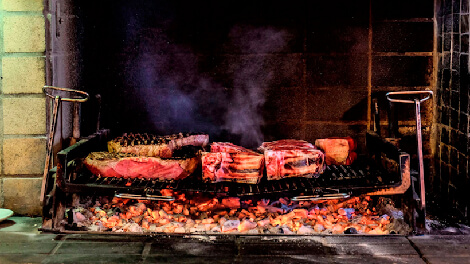
MAIN COURSE – FIORENTINA T-BONE STEAK
Beef meat of Chianina or Scottona high quality breed cut high (6 cm) and with a lot of bone. It is cooked on the grill and should be served rare / medium rare. The Fiorentina steak (from Florence) is the most famous Tuscan dish, so much so that in Italy the term Fiorentina has become synonymous with steak
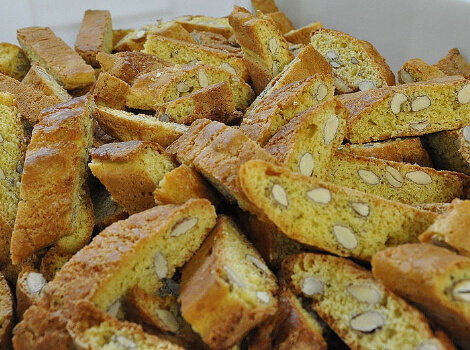
DESSERT – CANTUCCI BISQUITS
The most famous Tuscan biscuit, made with flour, sugar, eggs, almonds and pine nuts, is accompanied by a good glass of sweet and fortified Vin Santo.
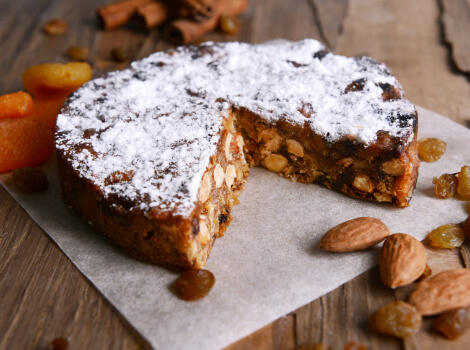
DESSERT – PANFORTE / PANPEPATO
It is the Christmas cake of the city of Siena. It is made with white flour, almonds, honey, sugar, candied fruit, cinnamon, cardamom, cloves and nutmeg. There are two versions that differ in their coverage, vanilla sugar or black pepper. It is very nutritious, the progenitor of the current energy bars.


